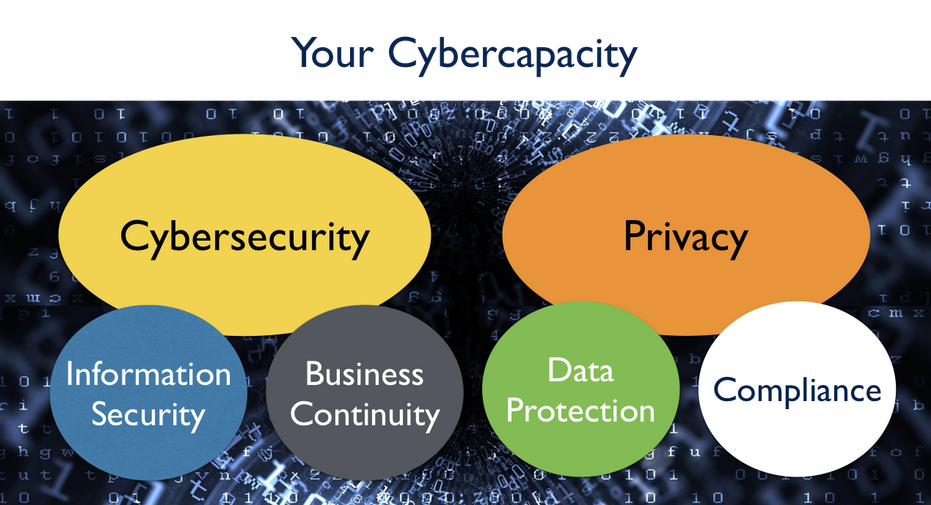In our previous article on GDPR compliance, we explored whether you are on the right side of the law. In this article, we speak about how to make sure you are and keep it like that. We left off with the question: What is the best way to establish a new type of business culture that is conducive to cybersecurity and privacy compliance?
Privacy is one of the integral elements of an enterprise’s cybercapacity. Establishing a culture of privacy requires the fundamental renewal of the whole organization rather than just offering GDPR training to employees.
It is the difference between adding a sugar-coated layer of compliance versus change enablement, which promotes real change from within.

This enhances performance and delivers better business results across the entire value chain. Only then can a true culture of privacy evolve within an organisation.
The real goal of introducing GDPR in 2018 was not just to add a layer of complexity but among other things, to get people in organizations to start thinking differently.
Fostering change entails enabling organizations and their workforce to adapt their work behavior and innovation capabilities at every point in the value chain.
Depending on the digital maturity of the organization I offer two approaches below.
Fostering a Culture of Privacy through Change Enablement
Change enablement requires setting up an organization to support it from a much earlier point than in compliance. Depending on the digital maturity of the enterprise, change enablement has different functions:
Start-ups
A start-up working on a Minimum Viable Product (MVP), for example, is in a privileged position. It can build the necessary privacy measures from scratch. Through that, they can establish this mindset as early as the seed phase.
Change enablement then serves to ensure continuity in data protection by design and default (e.g. when a new technology is deployed or when there is large-scale processing of special categories of data).
The startup establishes the necessary awareness to start building a culture of privacy, which will be strengthened further in the post-seed phase.
All of these processes can be captured and consolidated within a digital handbook, shared across the team. This is especially relevant for remote teams during both onboarding and daily operations.
A digital handbook will act as a constantly evolving reference point for all internal and external processes.
Established enterprises
Traditional businesses, on the other hand, that had only casually complied with the
Data Protection Directive 95/46/EC, still need to pull up their socks to meet the necessary measures of the GDPR.
The truth is that the GDPR did disrupt some of their value chains, organizational structures, operational processes, revenue models and the way people work and collaborate.
However, making use of the full potential of change enablement – from needs analysis to continuous renewal will help greatly establish and maintain a privacy compliance culture.
The rewards for using change enablement are tremendous: Not only are employees able to realize the full potential of the regulation, but all organizations have a golden opportunity to build trusted relationships with their customers.
By doing so, they can further shape innovation, realizing the full potential of the new gold of the digital age.
Change enablement is what makes the GDPR a blessing in disguise. Want to explore further?
Schedule a Free Advisory Call

